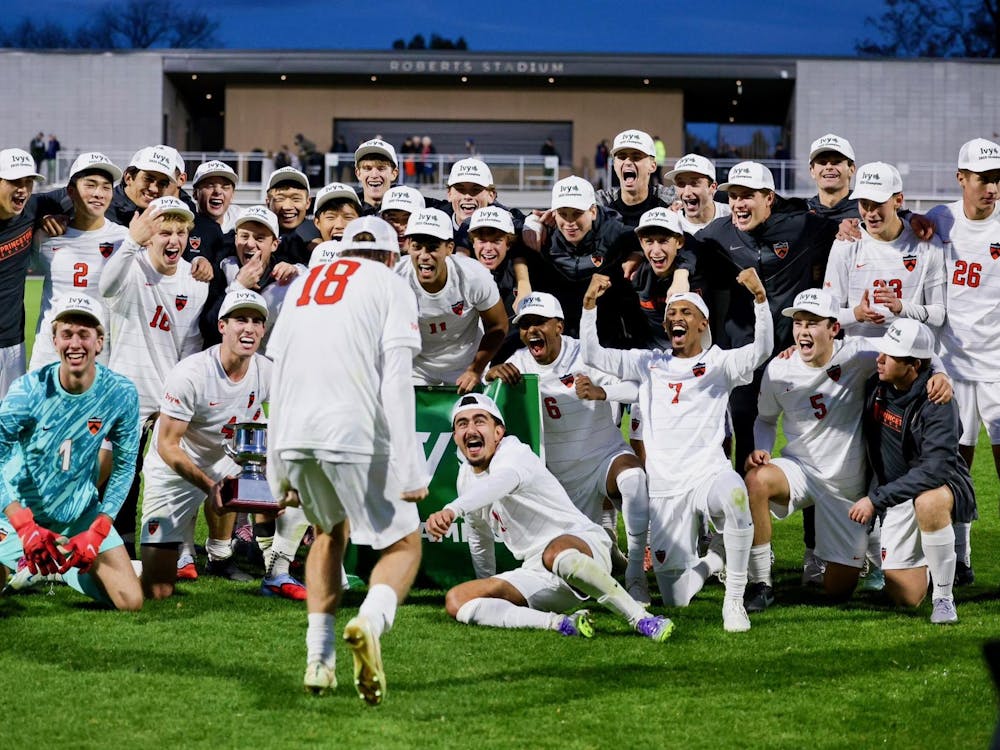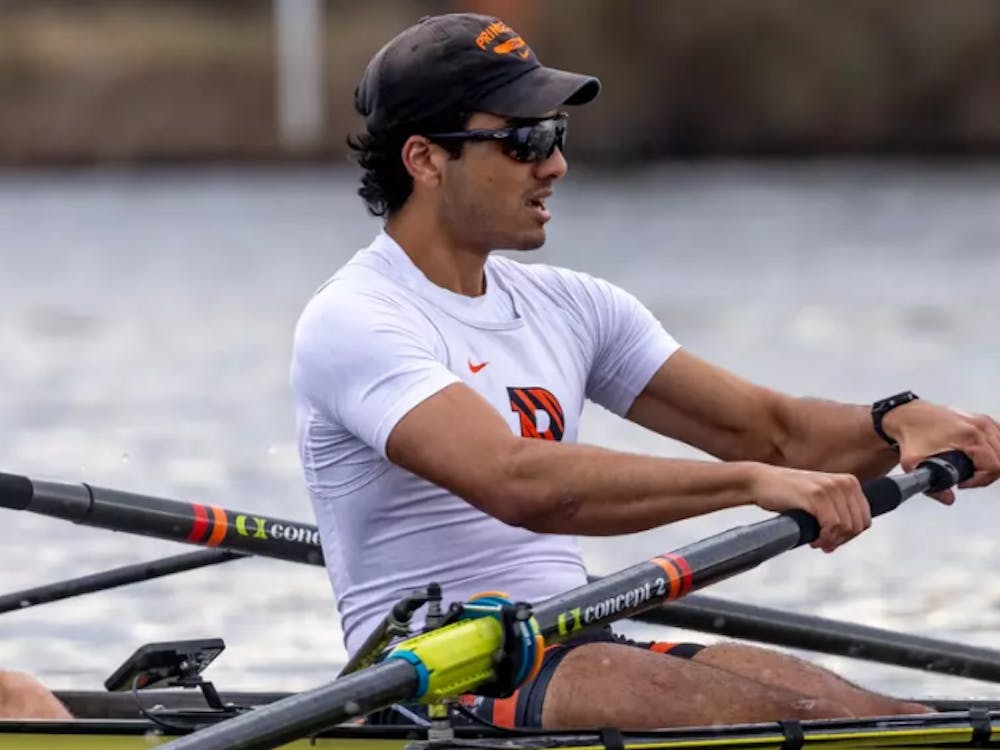Correction appended
Princeton’s campus is filled with historic buildings: Nassau Hall, the University Chapel, Alexander Hall and Chancellor Green come to mind. Yet there is one such building on campus with which surprisingly few students are familiar: Jadwin Gymnasium.
Jadwin, completed in 1969, is a hulking glass-and-concrete structure nestled between Princeton Stadium and Lake Carnegie. Though not all University students spend time inside the building, Princeton’s primary indoor athletic facility — the current home of the basketball, squash, fencing and indoor track teams — has hosted numerous memorable sporting events over its 40-year history, including an NBA regular-season game between the New Jersey Nets and the New Orleans Jazz in 1979, the Princeton men’s basketball team’s 1999 upset of Georgetown in the opening round of the National Invitational Tournament, several NCAA Tournament first-round men’s basketball games and the women’s squash team’s 2008 national championship victory. During the men’s basketball team’s heyday in the ’70s, 7,500 fans regularly packed the arena to see Princeton play.
“One [Jadwin] highlight would definitely be Princeton’s win over North Carolina,” Director of Athletics Gary Walters ’67 said, referring to Princeton’s 1971 upset of the Tar Heels. “A lot of people will remember Princeton having played some other really good teams in Jadwin [over the years].”
Though Jadwin no longer attracts the massive crowds it once did, it remains one of the most well-regarded collegiate gymnasiums in the country. Its most unusual feature and its greatest strength is its versatility. The five-level structure is capable of accommodating nearly every varsity sport on campus thanks to an adaptable design made possible by its 250,000 square feet of floor space — an area equivalent to that of eight football fields. This allows the men’s and women’s basketball teams and the indoor track squad to practice simultaneously on one level, while the squash and fencing teams practice a floor below. “From a functional standpoint, it’s amazing how farsighted the builders of Jadwin were,” Walters said. “It’s probably the finest multipurpose facility in the East.”
Construction of Jadwin began in 1965, thanks to a $27 million unrestricted donation from the mother of Leander Jadwin ’28, a track star at Princeton who died in a car crash eight months after graduating from the University.
Replacing Dillon Gymnasium, which had been completed only 18 years earlier, became necessary because of the rapid growth in popularity of Princeton’s successful men’s basketball program during the ’50s and the early- and mid-’60s, when future NBA Hall of Famer Bill Bradley ’65 played forward for the Tigers. Dillon, with its maximum capacity of 3,500 spectators, was too small to accommodate Princeton’s growing fan base.
“You couldn’t get a seat to see a game in Dillon,” said Walters, who was a member of the men’s basketball squad from 1963 to 1967. “Demand was three times the number of seats.”
Aside from its central role in Princeton athletics over the past four decades, Jadwin has been an important cultural center, hosting many nonathletic events, including speeches from former secretary of state Condoleezza Rice and comedian Eddie Murphy, a massive Vietnam War protest in 1971 and musical performances from Bruce Springsteen, Cat Stevens, the group Boston and the Beach Boys.
“We’ve been close at times, actually, to having James Taylor,” Walters said. “I’ve been waiting for the time that we could have a James Taylor concert at Jadwin. It just has never materialized.”
In January, Jadwin celebrated its 40th anniversary. But as Jadwin enters its golden years, it is showing signs of its age. The structure has become increasingly expensive to maintain, and its unusual triple-shell roof now needs to be replaced every few years, an enormously expensive undertaking.
In recent years, the University has invested heavily in modernizing Jadwin’s athletic facilities and updating its mid-century facade. The result is a facility that, though older than most comparable structures in the Ivy League and elsewhere, remains fairly cutting-edge.

“I think Jadwin has weathered the test of time quite well,” women’s squash head coach Gail Ramsay said.
Replacing Jadwin would be extremely expensive, especially considering the adverse affects of the faltering economy on the University’s budget. As such, Jadwin looks poised to continue serving as the home of the Tigers’ athletic programs for a long time to come. While it does, Jadwin will stand as testament to the past and continuing success of Princeton athletics.
Correction
An earlier version of this article mistakenly said that Bradley played guard for Princeton’s men’s basketball team. In fact, he was a forward.







